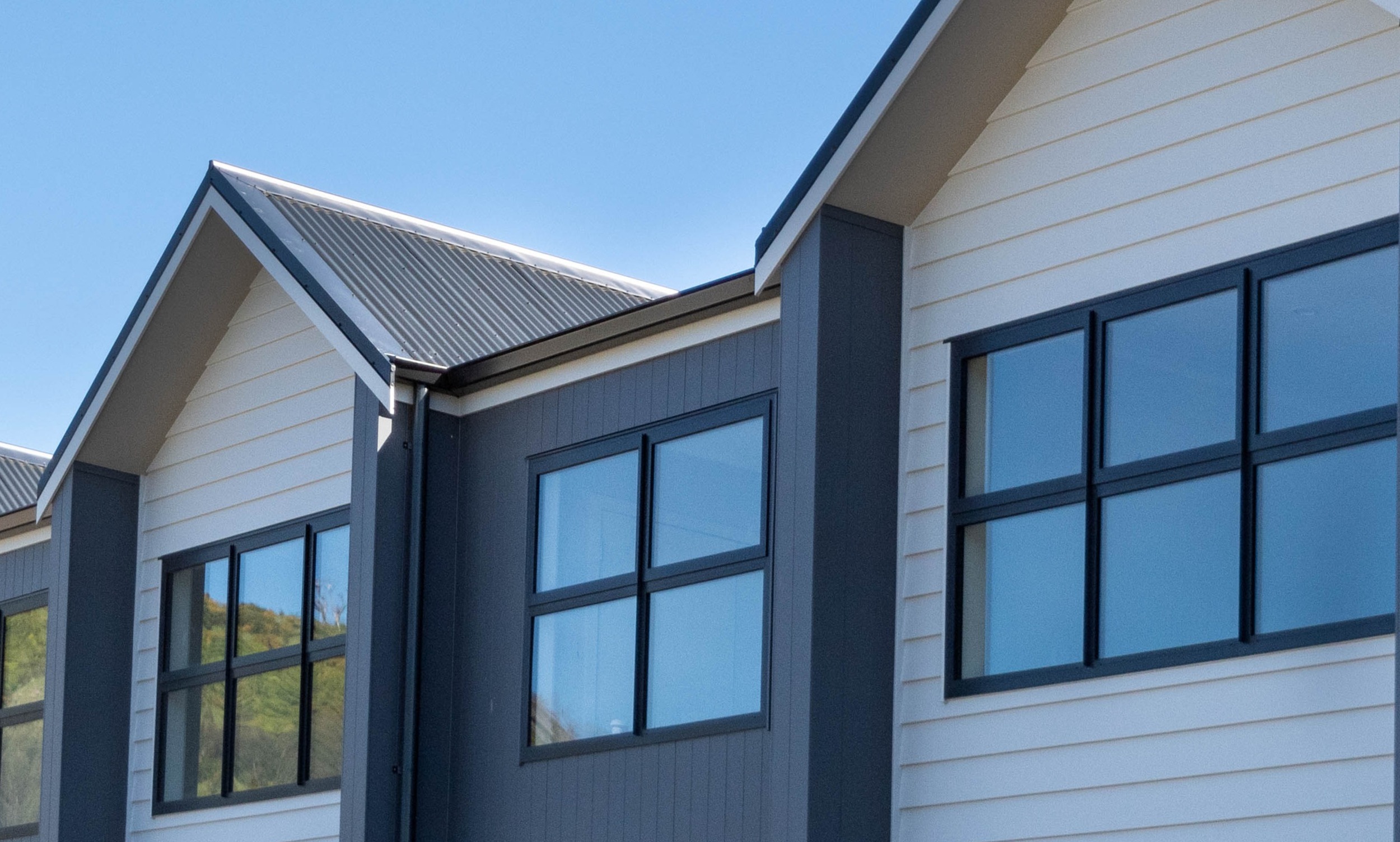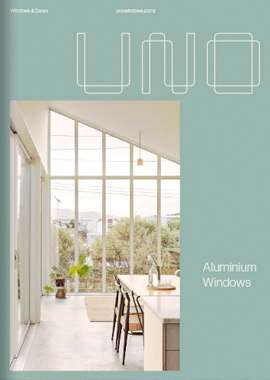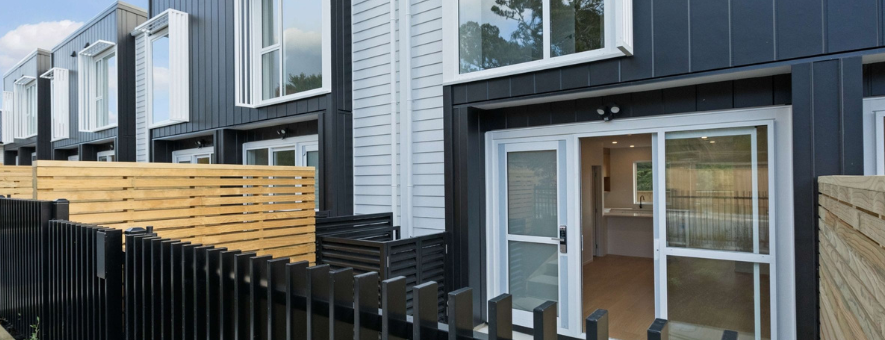Specifying the joinery for a building project can be daunting so it pays to understand every aspect of the process.
In this article, we share top tips on how to design your windows and doors, taking configurations, glazing, longevity, energy efficiency, and coatings into account.
Window systems and configurations
While there are an infinite number of bespoke solutions, the following window and door configurations are the most common:
Fixed Window
A fixed window, also known as a picture window, does not open. They are a great way to capitalise on unobscured views and also work well for providing additional light beside entrance doors, passageways, and stairwells.
Casement Window
Casement windows are hinged on one side, allowing the window to swing open and closed. Casement windows provide excellent ventilation and can also be a great design feature, particularly when the height of the window doesn’t allow for an awning-style opening.
Awning
Awning windows are a type of casement window that is hinged at the top. To open, the windows swing outward from the building, providing excellent ventilation.
Stacking doors
Stacker doors have two sliding panels, allowing around two-thirds of the window size to be open. This is ideal for maximising indoor-outdoor flow.
Sliding doors
Sliding doors feature one sliding panel, which moves along a horizontal track. They are easy to open and allow people to connect with outdoor areas.
Bifold doors
A bifold door consists of multiple hinged panels that fold back towards the frame. This accordion-style configuration provides a larger opening, ideal for kitchens, outdoor areas, and dining areas.
Custom Windows and Doors
We can design and manufacture custom windows to suit your project. Talk to our team today about the unique window configuration you are hoping to achieve.
Glazing
When specifying aluminium windows, selecting the right glass type will influence the building's energy efficiency and comfort. In all New Zealand climate zones, Low-E glass is a minimum requirement to meet the H1 Standards. You’ll also need to consider solar heat gain, pane sizes, and height of the sill from the finished floor level and how this works with glass impact rules.
Durability and longevity
Compared to other window frame materials, such as wood and UPVC, aluminium offers exceptional long-term performance. When cared for correctly, aluminium frames are incredibly strong and low maintenance. Aluminium doesn’t rot over time and its corrosion resistance and UV resistance make it ideal for New Zealand environments.
H1 standards
Your windows and doors will need to comply with the New Zealand Building Code H1 standards for energy efficiency. These standards have increased for both residential and commercial buildings, requiring certain building elements to achieve a higher R-value than before.
To comply with the new H1 requirements, Low-E glass and thermally broken aluminium frames help reduce heat transfer. For more information on how to calculate an R-value and how to comply, download our helpful Guide to R-values and H1 Requirements.
Aluminium coating
When selecting the powdercoat coating for your aluminium, we have a selection of window ranges available depending on your project type and location.
Residential — Interpon D1010 Premium Residential
This is a warranty-grade powder coating engineered for residential aluminium. It meets AAMA standards with excellent colour retention. In coastal environments less than 100m from the high tide line, you will need Interpon D2525 Futura instead.
Commercial — Interpon D1010 Premium Commercial
This range is designed specifically for commercial environments. It provides outstanding colour retention and includes several coating technologies designed to meet the AAMA standards.
Harsh Environments — Interpon D2525 Futura
This is a super durable, TGIC-free powder coating for architectural applications in harsh environments. This is designed for buildings close to the coast and offers excellent colour retention and film integrity.
Powdercoat colour and finish
When specifying the colour and finish for your aluminium windows, there are a lot of options to choose from. At UNO Windows & Doors, we have a wide range of Interpon colours and three different finishes available.
Powdercoat colours
When choosing the colour of your windows and doors, here are a few things to consider:
- Do you want the windows to match the cladding or roof?
- How will the interior and exterior colour schemes interact?
- Will it look dated at a later date?
The UNO key colours are New Zealand’s most popular colours for windows and doors, making them a future-proof choice. You can never go wrong with a neutral window colour which will suit the exterior and blend in with any interior style as trends change over time.
At UNO, we offer colour samples to help you make an informed decision. Simply request the samples you need and we’ll send them your way.
Powder coat finishes
UNO offers two powder coat finishes Matt and Textured.
Matt is more scratch-resistant and easier to care for, making it the most popular finish choice for customers. The Textured finish is specifically for use on entrance doors, as it is more durable, resistant to scuffing, and easier to clean.
Aluminium windows in NZ
Here at UNO Windows & Doors, we’re proud of our aluminium windows and doors. They not only meet and exceed New Zealand Standards, but they’re also extremely durable and consistent across our entire range.
To get started with your project, download our technical files or request colour samples to inspire your architectural design. Alternatively, you can download the following product brochures for more information:




